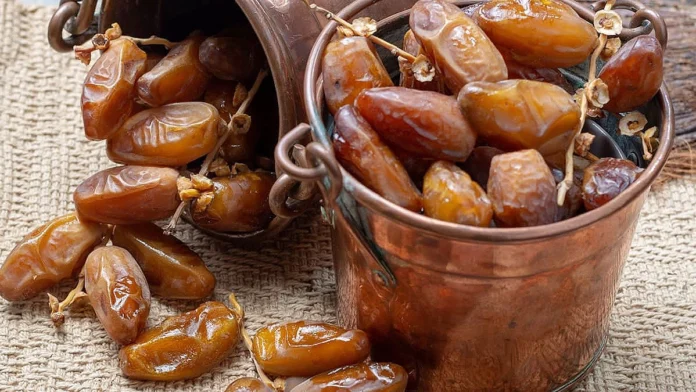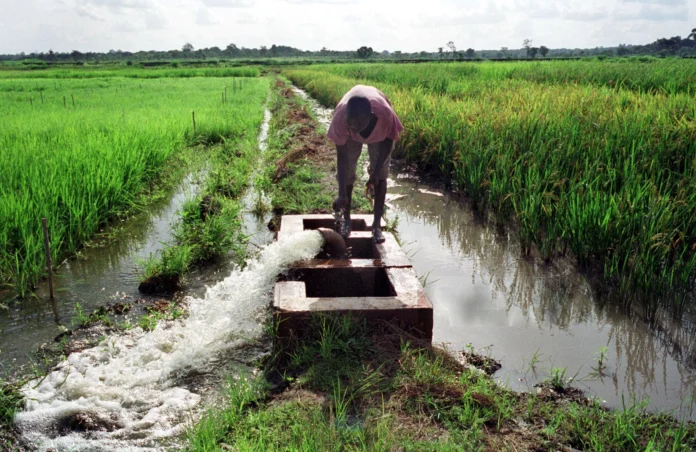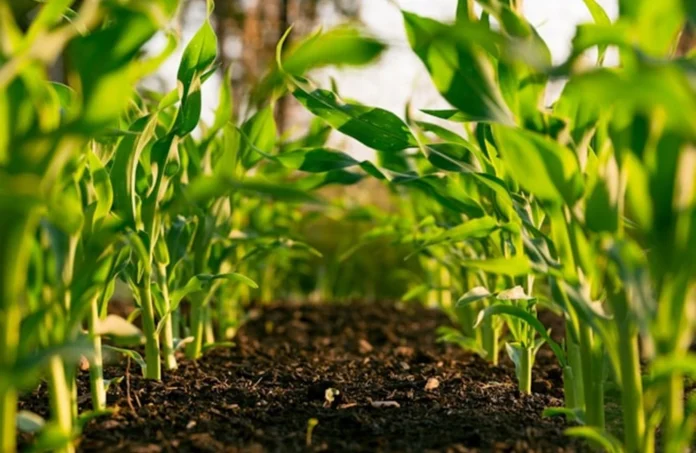Arabfields, Sophia Daly, Financial Analyst specialized in Agriculture and Futures Markets — As of October 27, 2025, domestic prices for key agricultural commodities in Vietnam demonstrated remarkable steadiness, with coffee hovering between 115,200 and 116,500 Vietnamese dong (VND) per kilogram and black pepper maintaining levels around 142,000 to 143,000 VND per kilogram. This consistency in local markets comes against a backdrop of mixed movements on international exchanges, reflecting the intricate interplay between regional supply dynamics, global demand, and seasonal factors. Vietnam, as one of the world’s leading exporters of both coffee and pepper, plays a pivotal role in these sectors, where even minor price shifts can influence farmers’ livelihoods, export revenues, and broader economic stability in rural areas.
In the global arena, coffee prices showed divergent trends across major trading floors. On the London exchange, Robusta coffee futures for November 2025 delivery rose by 17 U.S. dollars per tonne, closing at 4,571 dollars per tonne. Similarly, the January 2026 contract advanced by 36 dollars per tonne to reach 4,557 dollars per tonne. These gains underscore a resilient demand for Robusta, which is predominantly grown in Vietnam and favored for its robustness in instant coffee production and blends.
Conversely, on the New York exchange, Arabica coffee experienced downward pressure. The December 2025 contract declined by 7.15 cents per pound, settling at 403 cents per pound, while the March 2026 delivery dropped by 6.7 cents per pound to 383.05 cents per pound. Arabica, known for its milder flavor profile and higher quality in specialty markets, often responds more sensitively to weather-related uncertainties in major producers like Brazil and Colombia. This contrast between Robusta and Arabica highlights the segmented nature of the global coffee market, where supply constraints in one variety can bolster prices in another.
Domestically, a morning survey across Vietnam’s Central Highlands, the nation’s coffee heartland, confirmed the stability of prices within the 115,200 to 116,500 VND per kilogram range. This region, encompassing provinces like Lam Dong, Dak Lak, Dak Nong, and Gia Lai, accounts for the bulk of Vietnam’s coffee output, making its price trends a barometer for the industry.
In Lam Dong Province, transactions in districts such as Di Linh, Bao Loc, and Lam Ha held firm at 115,200 VND per kilogram, unchanged from the previous day. This lower end of the spectrum reflects Lam Dong’s position as a key growing area with slightly varied soil and climate conditions that can influence yields.
Further north in Dak Lak Province, coffee purchases reached 116,500 VND per kilogram in several areas, maintaining parity with yesterday’s levels. Specific locales like Ea H’leo and Buon Ho saw trades at 116,400 VND per kilogram, illustrating minor micro-regional variations driven by factors such as transportation costs and local trader negotiations.
Dak Nong Province mirrored this steadiness, with Gia Nghia recording 116,500 VND per kilogram and Dak R’lap at 116,400 VND per kilogram. These figures emphasize the province’s growing importance in Vietnam’s coffee landscape, bolstered by expanding plantations and improved farming techniques.
In Gia Lai Province, Chu Prong district transactions stood at 116,000 VND per kilogram, while Pleiku and La Grai both remained at 115,900 VND per kilogram, all unchanged. Gia Lai’s diverse terrain supports a mix of coffee and other crops, contributing to a balanced agricultural economy.
Looking back at the previous week, coffee prices fluctuated within the same 115,200 to 116,500 VND per kilogram band but marked an overall increase of 1,700 to 2,000 VND per kilogram compared to the week prior. This uptick stemmed primarily from limited supplies from the new harvest season, as farmers held back stocks amid expectations of further price rises. Notably, Dak Lak, Gia Lai, and Dak Nong each saw a 2,000 VND per kilogram rise, whereas Lam Dong experienced a more modest 1,700 VND increase, reinforcing its status as the area with the lowest purchase prices.
Projections for the 2025-2026 crop year offer optimism, with anticipated production growth of approximately 10 percent over the previous season, contingent on favorable weather patterns. This potential expansion could alleviate some supply pressures that have plagued the industry in recent years, including erratic climate events and escalating input costs like fertilizers and labor. For Vietnam’s coffee sector, which exports millions of tonnes annually and supports millions of smallholder farmers, such developments signal a pathway toward recovery and sustained growth, potentially stabilizing prices and enhancing competitiveness on the world stage.
Shifting focus to black pepper, domestic prices as of October 26, 2025, showed no deviations from the prior day across major cultivation zones, anchoring the overall range at 142,000 to 143,000 VND per kilogram. This steadfastness provides a measure of relief to growers in a market often characterized by volatility due to its dependence on export demand and climatic vulnerabilities.
In Dak Lak Province, pepper traded at 143,000 VND per kilogram, unchanged. Dak Nong followed suit at the same level, highlighting the interconnectedness of these highland areas where pepper vines often intermingle with coffee plantations in intercropping systems.
Gia Lai Province recorded purchase prices at 142,000 VND per kilogram, steady from yesterday. Similarly, in Dong Nai Province, traders dealt at 142,000 VND per kilogram, while Ba Ria-Vung Tau Province maintained 142,000 VND per kilogram. Binh Phuoc Province, another significant hub, saw buy-and-sell activity at 142,000 VND per kilogram without adjustments.
On the international front, global pepper prices exhibited general stability as of 5 a.m. Vietnam time on October 27, with a notable exception in Indonesia. Indonesian Lampung black pepper edged up by 0.01 percent to 7,211 dollars per tonne, and Muntok white pepper advanced by 0.09 percent to 10,061 dollars per tonne. These incremental gains suggest a gradual revival in purchasing demand across Southeast Asia, though the increases remain modest and contained.
In Malaysia, prices held steady, with ASTA black pepper at 9,500 dollars per tonne and ASTA white pepper at 12,500 dollars per tonne. Brazil’s market also remained unchanged at 6,100 dollars per tonne for black pepper, indicating a broader equilibrium in supply and demand dynamics.
For Vietnam, the top global exporter of pepper, export prices were unaltered: 500 grams per liter black pepper at 6,400 dollars per tonne, 550 grams per liter at 6,600 dollars per tonne, and white pepper at 9,050 dollars per tonne. Current market transactions appear subdued, attributable to supply shortages as farmers prioritize end-of-season vine maintenance over sales. Major production areas report stable growth this year, with reduced incidences of pests and diseases compared to the previous cycle, which bodes well for overall plant health and future yields.
Industry analysts foresee short-term price resilience due to depleted inventories, keeping local rates elevated. However, as the 2025-2026 harvest commences in late November, an influx of new supplies could prompt a mild retreat of 1,000 to 2,000 VND per kilogram. Despite this, the Vietnamese pepper market’s long-term outlook remains buoyant, fueled by resurgent import demand from key markets including China, India, and European nations.
The persistence of high pepper prices in recent months has buoyed export-oriented enterprises, positioning the fourth quarter of 2025 as an opportune period for securing new delivery contracts. This momentum could lay the groundwork for expanded production and heightened export values in 2026, reinforcing Vietnam’s dominant position in the global spice trade.
In summary, the current stability in Vietnam’s coffee and pepper prices underscores the resilience of its agricultural sector amid global uncertainties. As harvest seasons progress and international trade evolves, stakeholders will closely monitor weather, demand trends, and supply chains to navigate potential shifts, ensuring the continued vitality of these cornerstone industries.












